Nasser Jazdi
SyncFed: Time-Aware Federated Learning through Explicit Timestamping and Synchronization
Jun 11, 2025Abstract:As Federated Learning (FL) expands to larger and more distributed environments, consistency in training is challenged by network-induced delays, clock unsynchronicity, and variability in client updates. This combination of factors may contribute to misaligned contributions that undermine model reliability and convergence. Existing methods like staleness-aware aggregation and model versioning address lagging updates heuristically, yet lack mechanisms to quantify staleness, especially in latency-sensitive and cross-regional deployments. In light of these considerations, we introduce \emph{SyncFed}, a time-aware FL framework that employs explicit synchronization and timestamping to establish a common temporal reference across the system. Staleness is quantified numerically based on exchanged timestamps under the Network Time Protocol (NTP), enabling the server to reason about the relative freshness of client updates and apply temporally informed weighting during aggregation. Our empirical evaluation on a geographically distributed testbed shows that, under \emph{SyncFed}, the global model evolves within a stable temporal context, resulting in improved accuracy and information freshness compared to round-based baselines devoid of temporal semantics.
Control Industrial Automation System with Large Language Models
Sep 26, 2024



Abstract:Traditional industrial automation systems require specialized expertise to operate and complex reprogramming to adapt to new processes. Large language models offer the intelligence to make them more flexible and easier to use. However, LLMs' application in industrial settings is underexplored. This paper introduces a framework for integrating LLMs to achieve end-to-end control of industrial automation systems. At the core of the framework are an agent system designed for industrial tasks, a structured prompting method, and an event-driven information modeling mechanism that provides real-time data for LLM inference. The framework supplies LLMs with real-time events on different context semantic levels, allowing them to interpret the information, generate production plans, and control operations on the automation system. It also supports structured dataset creation for fine-tuning on this downstream application of LLMs. Our contribution includes a formal system design, proof-of-concept implementation, and a method for generating task-specific datasets for LLM fine-tuning and testing. This approach enables a more adaptive automation system that can respond to spontaneous events, while allowing easier operation and configuration through natural language for more intuitive human-machine interaction. We provide demo videos and detailed data on GitHub: https://github.com/YuchenXia/LLM4IAS
Incorporating Large Language Models into Production Systems for Enhanced Task Automation and Flexibility
Jul 11, 2024
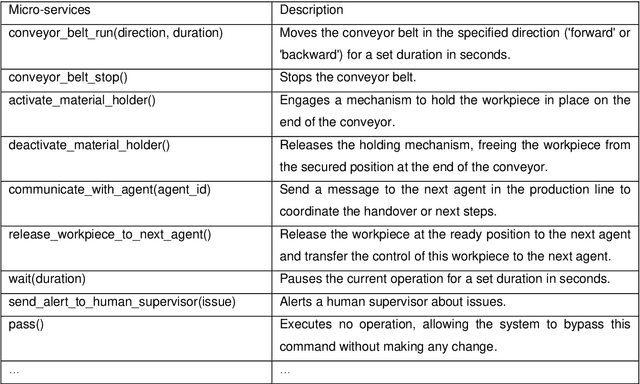

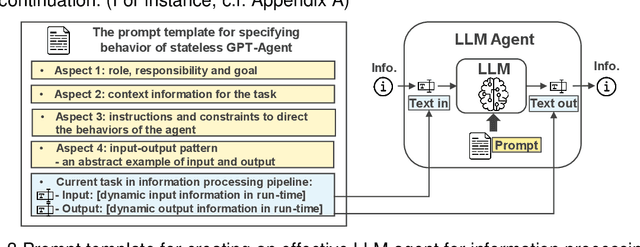
Abstract:This paper introduces a novel approach to integrating large language model (LLM) agents into automated production systems, aimed at enhancing task automation and flexibility. We organize production operations within a hierarchical framework based on the automation pyramid. Atomic operation functionalities are modeled as microservices, which are executed through interface invocation within a dedicated digital twin system. This allows for a scalable and flexible foundation for orchestrating production processes. In this digital twin system, low-level, hardware-specific data is semantically enriched and made interpretable for LLMs for production planning and control tasks. Large language model agents are systematically prompted to interpret these production-specific data and knowledge. Upon receiving a user request or identifying a triggering event, the LLM agents generate a process plan. This plan is then decomposed into a series of atomic operations, executed as microservices within the real-world automation system. We implement this overall approach on an automated modular production facility at our laboratory, demonstrating how the LLMs can handle production planning and control tasks through a concrete case study. This results in an intuitive production facility with higher levels of task automation and flexibility. Finally, we reveal the several limitations in realizing the full potential of the large language models in autonomous systems and point out promising benefits. Demos of this series of ongoing research series can be accessed at: https://github.com/YuchenXia/GPT4IndustrialAutomation
Illustrating the benefits of efficient creation and adaption of behavior models in intelligent Digital Twins over the machine life cycle
Jun 12, 2024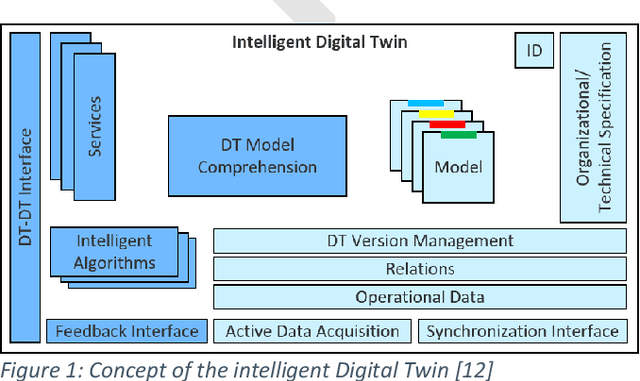
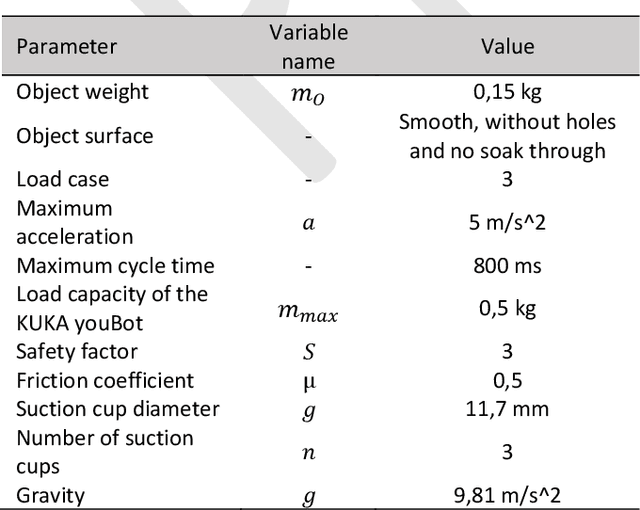
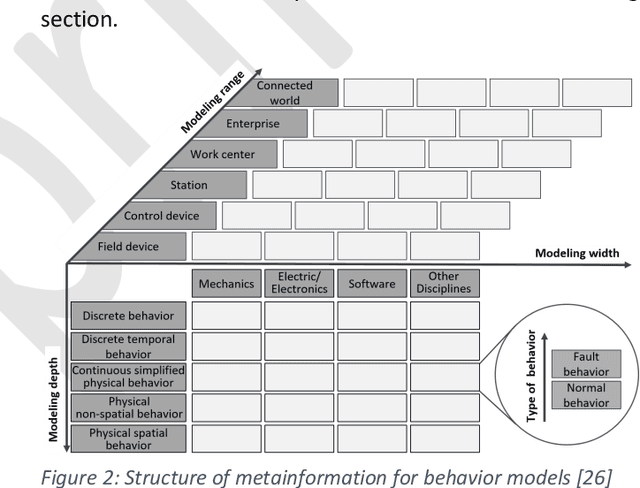
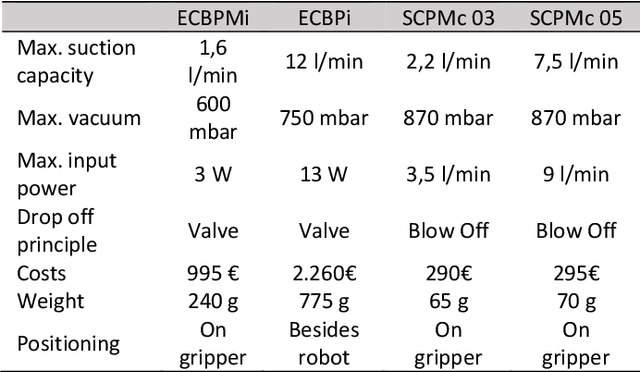
Abstract:The concept of the Digital Twin, which in the context of this paper is the virtual representation of a production system or its components, can be used as a "digital playground" to master the increasing complexity of these assets. Central subcomponents of the Digital Twin are behavior models that can provide benefits over the entire machine life cycle. However, the creation, adaption and use of behavior models throughout the machine life cycle is very time-consuming, which is why approaches to improve the cost-benefit ratio are needed. Furthermore, there is a lack of specific use cases that illustrate the application and added benefit of behavior models over the machine life cycle, which is why the universal application of behavior models in industry is still lacking compared to research. This paper first presents the fundamentals, challenges and related work on Digital Twins and behavior models in the context of the machine life cycle. Then, concepts for low-effort creation and automatic adaption of Digital Twins are presented, with a focus on behavior models. Finally, the aforementioned gap between research and industry is addressed by demonstrating various realized use cases over the machine life cycle, in which the advantages as well as the application of behavior models in the different life phases are shown.
LLM experiments with simulation: Large Language Model Multi-Agent System for Process Simulation Parametrization in Digital Twins
May 28, 2024Abstract:This paper presents a novel design of a multi-agent system framework that applies a large language model (LLM) to automate the parametrization of process simulations in digital twins. We propose a multi-agent framework that includes four types of agents: observation, reasoning, decision and summarization. By enabling dynamic interaction between LLM agents and simulation model, the developed system can automatically explore the parametrization of the simulation and use heuristic reasoning to determine a set of parameters to control the simulation to achieve an objective. The proposed approach enhances the simulation model by infusing it with heuristics from LLM and enables autonomous search for feasible parametrization to solve a user task. Furthermore, the system has the potential to increase user-friendliness and reduce the cognitive load on human users by assisting in complex decision-making processes. The effectiveness and functionality of the system are demonstrated through a case study, and the visualized demos are available at a GitHub Repository: https://github.com/YuchenXia/LLMDrivenSimulation
Generation of Asset Administration Shell with Large Language Model Agents: Interoperability in Digital Twins with Semantic Node
Mar 25, 2024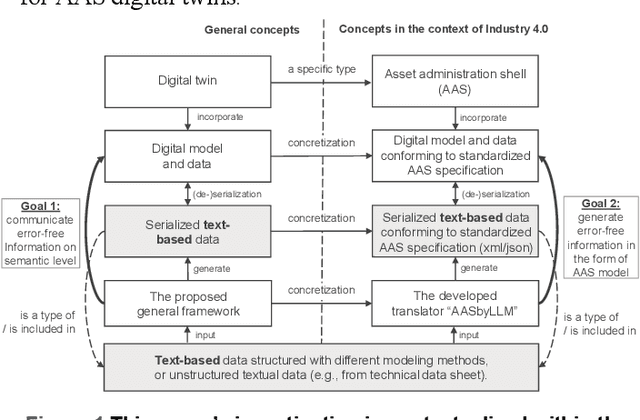
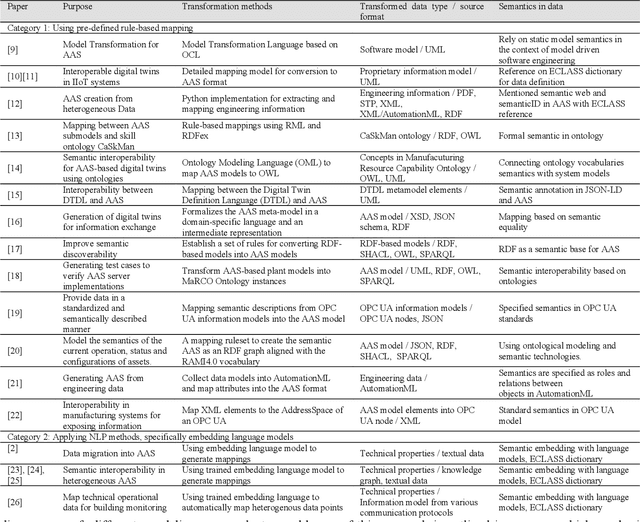
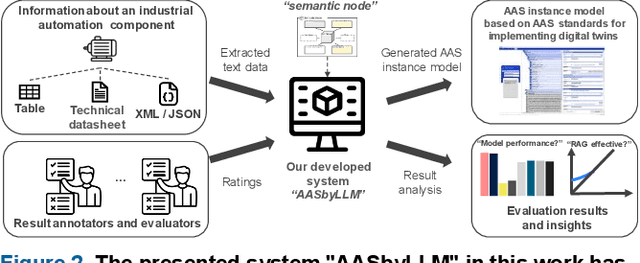
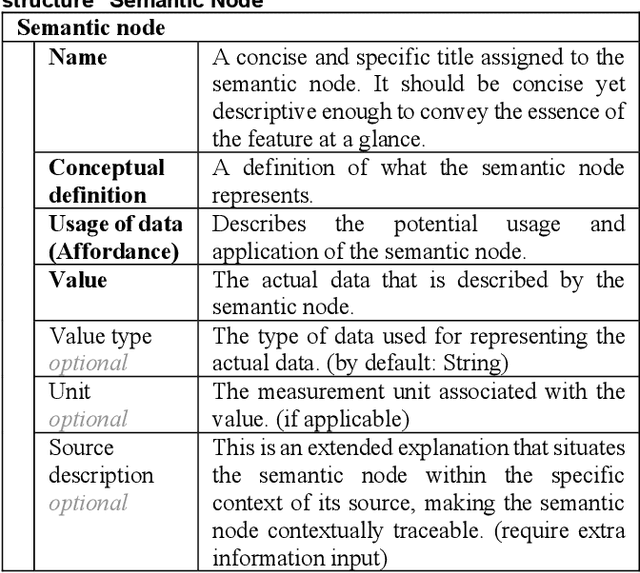
Abstract:This research introduces a novel approach for assisting the creation of Asset Administration Shell (AAS) instances for digital twin modeling within the context of Industry 4.0, aiming to enhance interoperability in smart manufacturing and reduce manual effort. We construct a "semantic node" data structure to capture the semantic essence of textual data. Then, a system powered by large language models is designed and implemented to process "semantic node" and generate AAS instance models from textual technical data. Our evaluation demonstrates a 62-79% effective generation rate, indicating a substantial proportion of manual creation effort can be converted into easier validation effort, thereby reducing the time and cost in creating AAS instance models. In our evaluation, a comparative analysis of different LLMs and an in-depth ablation study of Retrieval-Augmented Generation (RAG) mechanisms provide insights into the effectiveness of LLM systems for interpreting technical concepts. Our findings emphasize LLMs' capability in automating AAS instance creation, enhancing semantic interoperability, and contributing to the broader field of semantic interoperability for digital twins in industrial applications. The prototype implementation and evaluation results are released on our GitHub Repository with the link: https://github.com/YuchenXia/AASbyLLM
Towards autonomous system: flexible modular production system enhanced with large language model agents
May 02, 2023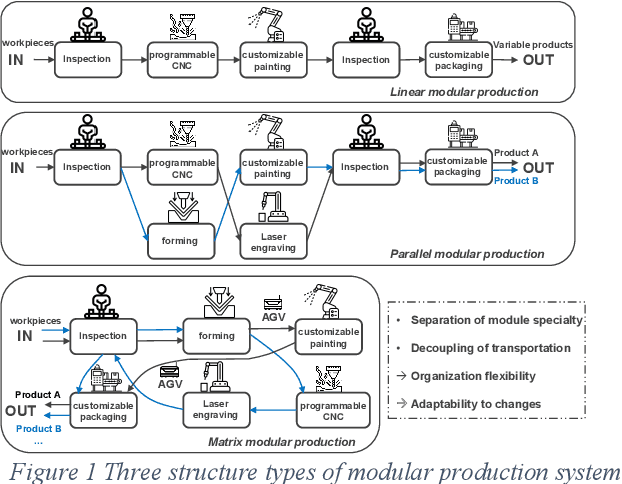
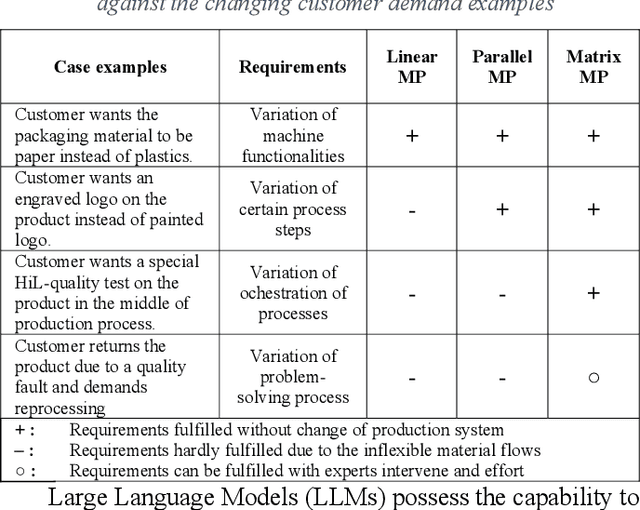
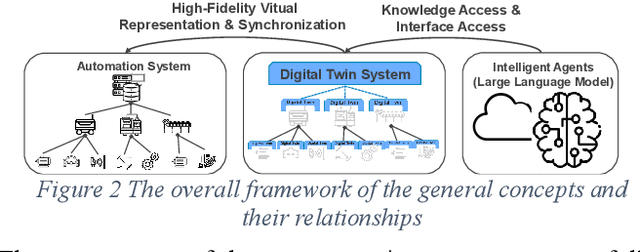
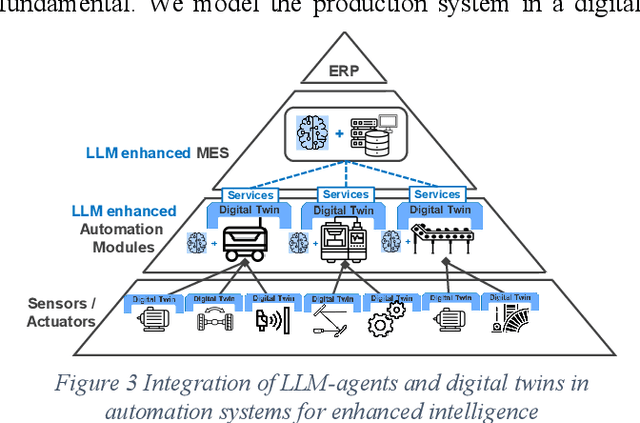
Abstract:In this paper, we present a novel framework that combines large language models (LLMs), digital twins and industrial automation system to enable intelligent planning and control of production processes. We retrofit the automation system for a modular production facility and create executable control interfaces of fine-granular functionalities and coarse-granular skills. Low-level functionalities are executed by automation components, and high-level skills are performed by automation modules. Subsequently, a digital twin system is developed, registering these interfaces and containing additional descriptive information about the production system. Based on the retrofitted automation system and the created digital twins, LLM-agents are designed to interpret descriptive information in the digital twins and control the physical system through service interfaces. These LLM-agents serve as intelligent agents on different levels within an automation system, enabling autonomous planning and control of flexible production. Given a task instruction as input, the LLM-agents orchestrate a sequence of atomic functionalities and skills to accomplish the task. We demonstrate how our implemented prototype can handle un-predefined tasks, plan a production process, and execute the operations. This research highlights the potential of integrating LLMs into industrial automation systems in the context of smart factory for more agile, flexible, and adaptive production processes, while it also underscores the critical insights and limitations for future work.
Intelligent Exploration of Solution Spaces Exemplified by Industrial Reconfiguration Management
Jul 04, 2022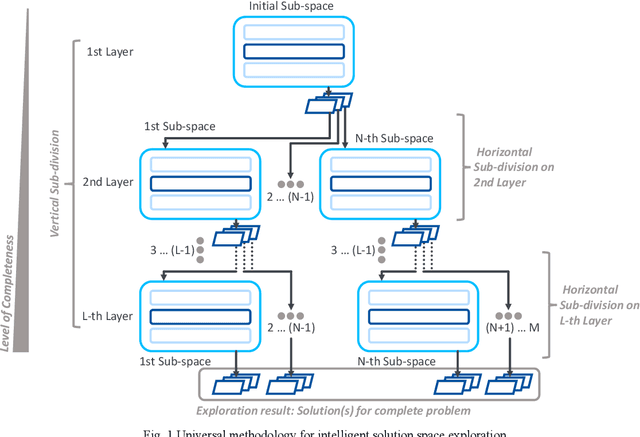

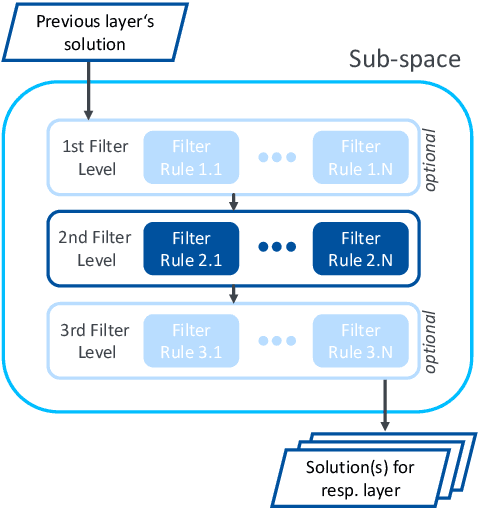
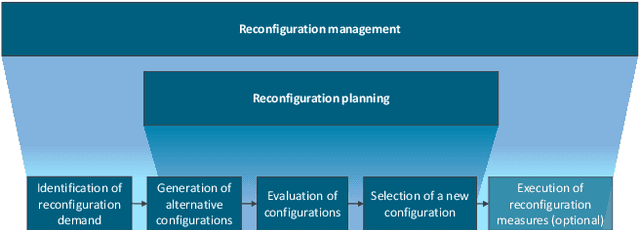
Abstract:Many decision-making approaches rely on the exploration of solution spaces with regards to specified criteria. However, in complex environments, brute-force exploration strategies are usually not feasible. As an alternative, we propose the combination of an exploration task's vertical sub-division into layers representing different sequentially interdependent sub-problems of the paramount problem and a horizontal sub-division into self-sustained solution sub-spaces. In this paper, we present a universal methodology for the intelligent exploration of solution spaces and derive a use-case specific example from the field of reconfiguration management in industry 4.0.
A Methodology to Identify Cognition Gaps in Visual Recognition Applications Based on Convolutional Neural Networks
Oct 05, 2021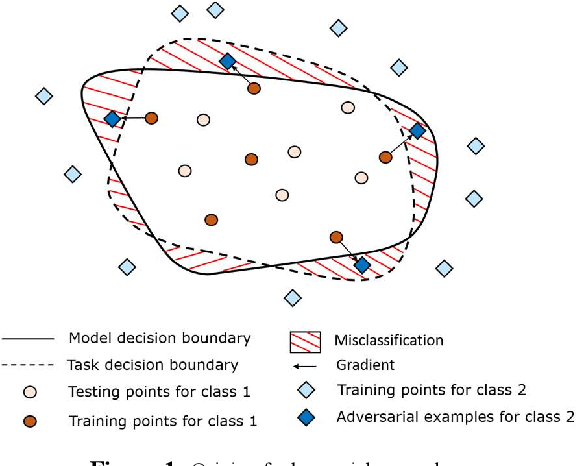
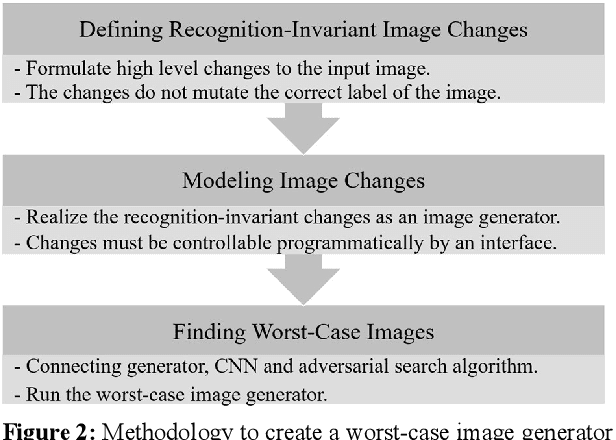
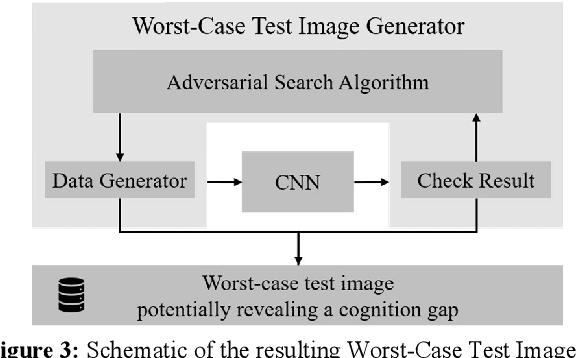
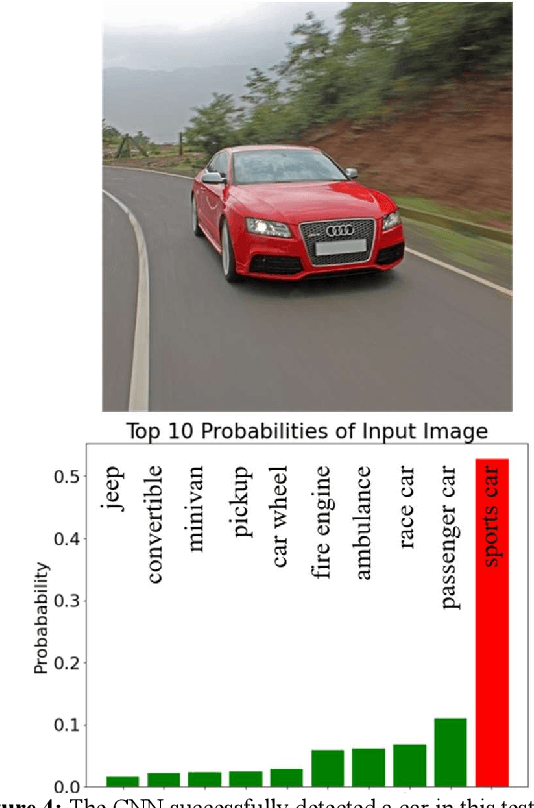
Abstract:Developing consistently well performing visual recognition applications based on convolutional neural networks, e.g. for autonomous driving, is very challenging. One of the obstacles during the development is the opaqueness of their cognitive behaviour. A considerable amount of literature has been published which describes irrational behaviour of trained CNNs showcasing gaps in their cognition. In this paper, a methodology is presented that creates worstcase images using image augmentation techniques. If the CNN's cognitive performance on such images is weak while the augmentation techniques are supposedly harmless, a potential gap in the cognition has been found. The presented worst-case image generator is using adversarial search approaches to efficiently identify the most challenging image. This is evaluated with the well-known AlexNet CNN using images depicting a typical driving scenario.
Enhancing an Intelligent Digital Twin with a Self-organized Reconfiguration Management based on Adaptive Process Models
Jul 07, 2021

Abstract:Shorter product life cycles and increasing individualization of production leads to an increased reconfiguration demand in the domain of industrial automation systems, which will be dominated by cyber-physical production systems in the future. In constantly changing systems, however, not all configuration alternatives of the almost infinite state space are fully understood. Thus, certain configurations can lead to process instability, a reduction in quality or machine failures. Therefore, this paper presents an approach that enhances an intelligent Digital Twin with a self-organized reconfiguration management based on adaptive process models in order to find optimized configurations more comprehensively.
 Add to Chrome
Add to Chrome Add to Firefox
Add to Firefox Add to Edge
Add to Edge